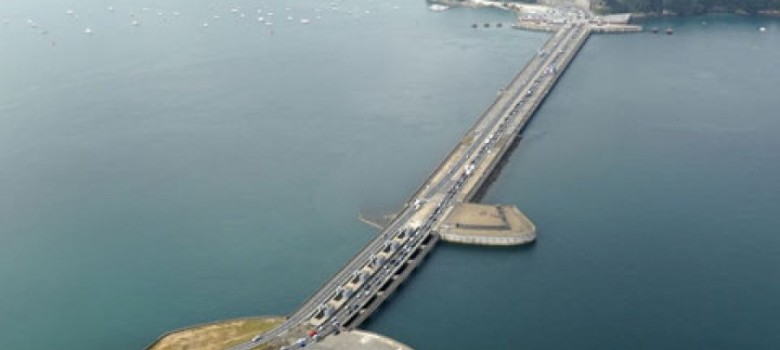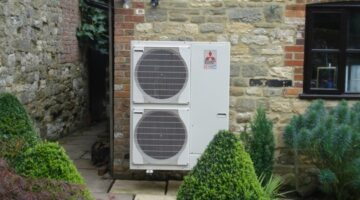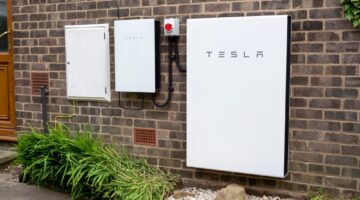
Background to the Rance Tidal Power Station
After a construction phase lasting five years, the Rance Tidal Power Station was opened on the 26th November 1966. This was the first power station to take advantage of tidal water flow to produce electricity (tidal energy). In order to be able to construct the structure across the estuary, two dams had to be built to block the Rance river during the first two years of the construction phase to ensure that the estuary was completely drained.
The reason that the Rance River estuary was chosen was due to its large tidal range; it actually has highest tidal range in France. It has an average tidal range of 8m between low and high tide, while the spring and neap range can be as big as 13.5m.
Rance Tidal Power Station and the Tidal Flow
When the tide is coming in, the water on the sea side of the barrage is higher than the estuary side; therefore water will flow from the sea side through the turbine into the estuary. When the tide is going out, the exact opposite occurs. As such, the turbines that were installed in the Rance Power Station have the capability to produce power in either direction.
The Rance Barrage is 750m long and 13m high, while the actual power generating portion of it is 330m long. This section houses 24 Bulb electricity turbines each rated at 10MW so the maximum capacity of the power station is 240MW. In practice the amount of power it actually produces is about 96MW, supplying approximately 600GWh per year to the grid, which would power approximately 130,000 houses a year
One of the major drawbacks about tidal energy is that it is not a constant source of electricity. There are two tides a day, when the tidal range is at is maximum, and the generating capacity will be at it’s maximum, however there are times when the water level on either side will pretty much be equal, so it will produce no power.
The advantage of tidal energy and therefore the power plant at Rance, is that the tides are totally predictable, so you can very easily factor this into the energy mix, while other intermittent renewable energy sources such as solar PV and wind farms are a lot less predictable.
Rance Power Station Cost
The Rance Power plant was expensive to build in its day and took about 20 years to actually pay for itself. This is one of the major reasons the proposed £30bn Severn Barrage has not gone ahead, it is simply too expensive to undertake this kind of construction challenge in these tough economical times. However the project is being looked at once again to see if it can be constructed at a lower cost.
Since the power plant was constructed though in 1965, it has produced approximately 27,600GWh of electricity. At today’s prices, that quantity of electricity would cost £3.30bn.
Rance Tidal Power Station Environmental Assessment
Since the tidal barrage construction needed to drain the estuary in the initial years after the construction was completed, there were severe impacts to the local environment; however 10 years later it was considered that the Rance estuary once again had a rich diversity of aquatic life.
The sluice gates and the lock (built to allow boats to get through the barrage) allow a fairly easy transition from one side to the other for all aquatic animals, so this did not have any real affect on species there either. The one impact it did have was that the mud flats were severely diminished so birds that used the mud flats as a hunting ground had to adapt or move elsewhere to feed.
Rance Tidal Power Station Final Assessment
Upon reflection it must be recognised that building the Rance Power Plant was quite the engineering feet, and one that perhaps in the Western world will not be reproduced, not even with new tidal energy solutions. The fact it produces plentiful, 100% clean electricity 46 years after construction and has become a tourist attraction in its own right has proved why it was such a sensible project to start in the first place.












Which Construction Company build the barrage?
Well, the barrage was build in 1966 and consequently we don’t have many information about the companies who took part in this project (probably many). But the main actor was EDF (one of the big 6 energy companies), who supervised the construction and who currently own the barrage.
what kind of turbine did they use
The turbine type is kaplan.rohrturbine called in german. But i dont know the translation :/. kaplan tube turbine maybe C:
list of wave energy’s technology in France
how many houses does it power?
Which company delivered the turbiner?
So it paid off its costs in 20 years and produces free energy for over 50 years; probably 100 years plus ?
You mean engineering FEAT, not FEET